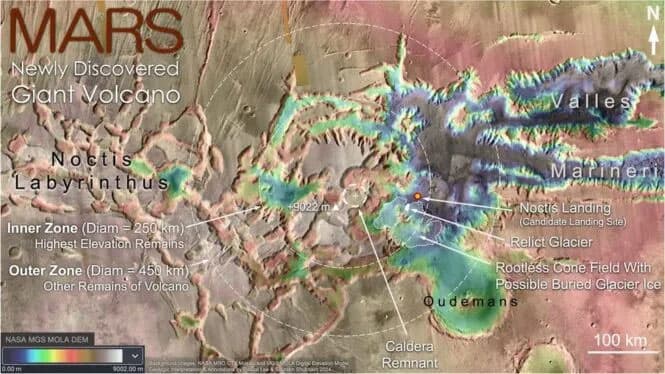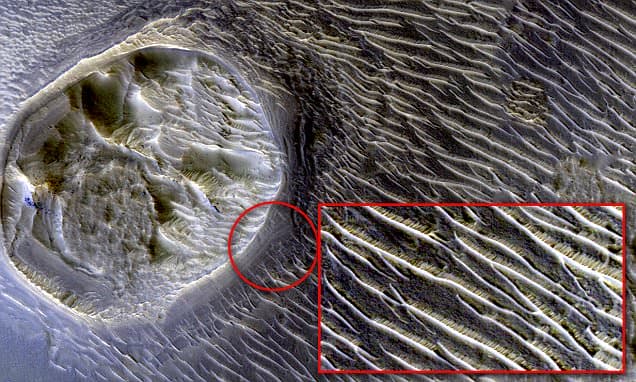New discovery of a colossal ancient volcano in the Labyrinth of the Night makes it an exciting choice for missions seeking signs of life.

The Labyrinth of the Night, also known as Noctis Labyrinthus, is located in the equatorial region of Mars, one of the celestial bodies where NASA and many other space agencies believe life may have once existed.
In a recent study, a team of scientists led by planetary scientist Pascal Lee from the SETI Institute (Search for Extraterrestrial Intelligence – USA) has uncovered the astonishing secret of the Labyrinth of the Night.

That’s when they followed the trail of an ancient ice river and discovered the remnants of a colossal, ancient volcano.
This volcano had been heavily eroded, initially escaping notice in satellite data. It has been tentatively named Noctis Mons.
“This area of Mars is known to have various types of water-rich minerals spread throughout its history. There are suspicions about the context in which these minerals formed due to the ancient volcano,” explained planetary geologist Sourabh Shubham from the University of Maryland (USA).
Upon further analysis, the research team realized the enormity of the volcano. It has a peak height of over 9,000 meters and spans more than 250 kilometers.

As a result, Notics Mons becomes the 7th highest feature on Mars, surpassing even the highest inactive volcano on Earth (6,893 meters).
In the central area, scientists identified the collapsed mouth of the volcano, which used to be a boiling magma lake.
Additionally, some plateau-shaped peaks in the central region form a circular pattern, outlining a volcano cone, sloping down to the lava plains surrounding the geological chaos.
The volcanic deposits also spread over an area of up to 5,000 square kilometers.
Interestingly, they discovered a large area containing mounds resembling blistered earth, a type of low-lying volcanic terrain that can be created when lava flows cover a water-rich or icy surface.
Thus, glacial deposits could be present here, possibly serving as evidence of a past world inhabited by life on the red planet.
The thermal interactions and ice in this area in the past could have also contributed to creating important life-supporting minerals, similar to what might have occurred on our Earth.
Therefore, scientists believe that the Labyrinth of the Night could also be a labyrinth of life waiting for humanity to explore.
Share this fascinating discovery with your friends and relatives to spark their curiosity about the mysteries of Mars and the potential for ancient life on other planets!

